Removal Procedure
Notice: If a turbocharger has failed, clean any turbocharger debris or excessive oil from the charge air cooler system before installing the new turbocharger. Failure to clean debris from the charge air cooler system will cause severe turbocharger and engine damage upon startup. Failure to clean excessive oil from the charge air cooler system may cause an engine runaway condition on startup, resulting in severe engine damage.
Important: If a turbocharger failure is thought to be caused due to lack of oil, the camshaft bearing should be checked. The number 4 camshaft bearing bore feeds the turbocharger oil supply (feed) pipe. If this camshaft bearing spins in the bore, the turbocharger will be starved for oil. This will cause a failure of the turbocharger. Failure to diagnosis this condition will result in repeat turbocharger failures.
- Disconnect the negative battery cable. Refer to Battery Negative Cable Disconnection and Connection in Engine Electrical.
- Raise the hood to the service position and perform the following:
- Remove the left and right wheelhouse liners. Refer to Wheelhouse Panel Replacement in Body Front End.
- Loosen the exhaust pipe clamp. Slide the clamp onto the exhaust pipe.
- If equipped with an automatic transmission, remove the transmission fill tube to bellhousing nuts.
- Lift the fill tube up from the studs and reposition the tube to the right side of the vehicle. The tube does not require removal from the transmission.
- Remove the left exhaust pipe heat shield bolts.
- Remove the heat shield.
- Remove the left exhaust pipe to exhaust manifold bolts.
- Remove and discard the exhaust manifold gasket.
- Remove the right exhaust pipe to exhaust manifold bolts.
- Remove and discard the exhaust manifold gasket.
- Remove the lower bolt for the exhaust outlet shield.
- Drain the cooling system. Refer to Cooling System Draining and Filling in Engine Cooling.
- Remove the air cleaner outlet duct. Refer to Air Cleaner Outlet Duct Replacement in Engine Controls - 6.6L (LLY).
- Loosen the charged air cooler outlet duct to intake hose clamp.
- Remove the charged air cooler outlet duct from the intake.
- Loosen the charged air cooler inlet duct connector to turbocharger clamp (1).
- Remove the charged air cooler inlet duct connector (4) from the turbocharger.
- Remove the turbocharger inlet coolant hose from the turbocharger coolant bypass valve.
- Reposition the hose clamp and remove the turbocharger outlet coolant hose from the turbocharger.
- Remove the turbocharger outlet coolant pipe banjo bolt and washers.
- Remove the positive crankcase ventilation (PCV) hose/pipe. Refer to Positive Crankcase Ventilation Hose/Pipe/Tube Replacement .
- Remove the turbocharger upper heat shield bolts.
- Remove the turbocharger upper heat shield.
- Remove the remaining exhaust outlet heat shield bolts.
- Remove the exhaust outlet heat shield.
- Loosen the exhaust outlet clamp.
- Remove the exhaust outlet.
- Remove the right exhaust pipe to turbocharger and exhaust gas recirculation (EGR) bolts.
- Remove the right exhaust pipe.
- Remove and discard the gasket.
- Remove the left exhaust pipe to turbocharger bolts.
- Remove the left exhaust pipe.
- Remove and discard the gasket.
- Remove the turbocharger oil feed pipe banjo bolt and washer.
- Reposition the oil feed pipe out of the way.
- Remove the turbocharger oil return pipe nuts at the top of the flywheel housing.
- Remove the turbocharger bolts.
- Remove the turbocharger (with the oil return pipe).
- Remove and discard the turbocharger oil return pipe gasket at the flywheel housing.
- Remove the turbocharger lower heat shield, if necessary.
- Remove the oil feed pipe bolt, washer, and pipe, if necessary.
- If the turbocharger has failed, perform the following steps the verify the condition of the number 4 camshaft bearing before installing a new turbocharger:
- If replacing the turbocharger, remove the oil return pipe bolts, pipe and gasket. Discard the gasket.
- Clean all turbocharger to engine gasket mating surfaces.
- If required, clean and inspect the turbocharger. Refer to Turbocharger Cleaning and Inspection
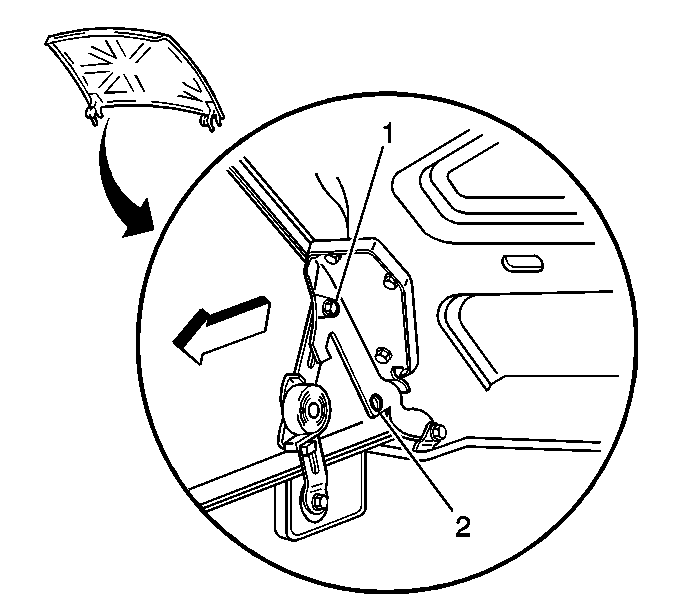
| 2.1. | Remove the hood hinge bolts (1). |
| 2.2. | Raise the hood until vertical. |
| 2.3. | Install the hood hinge bolts until snug, in the service position (2). |
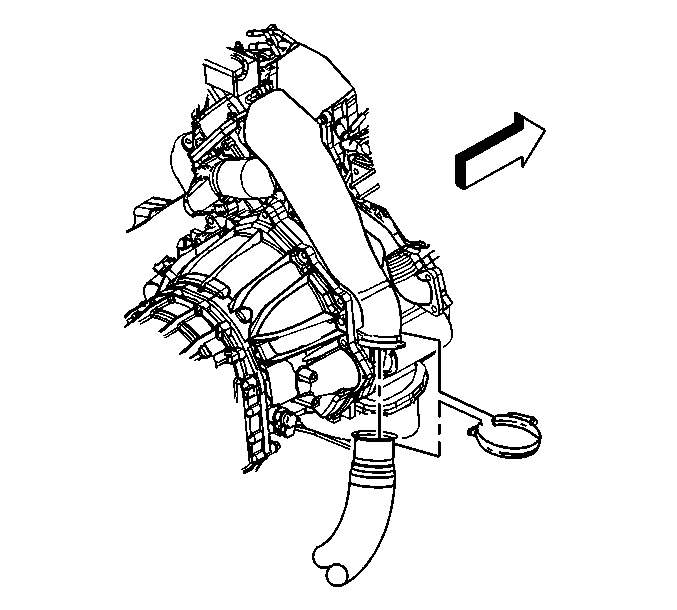
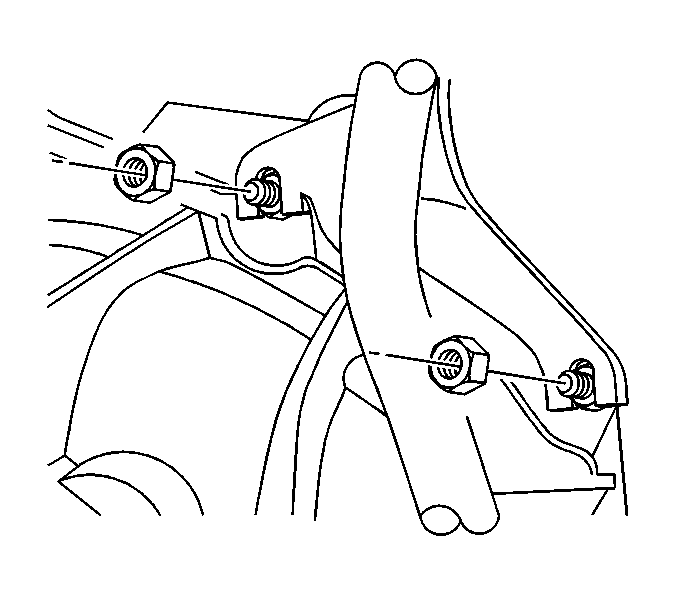
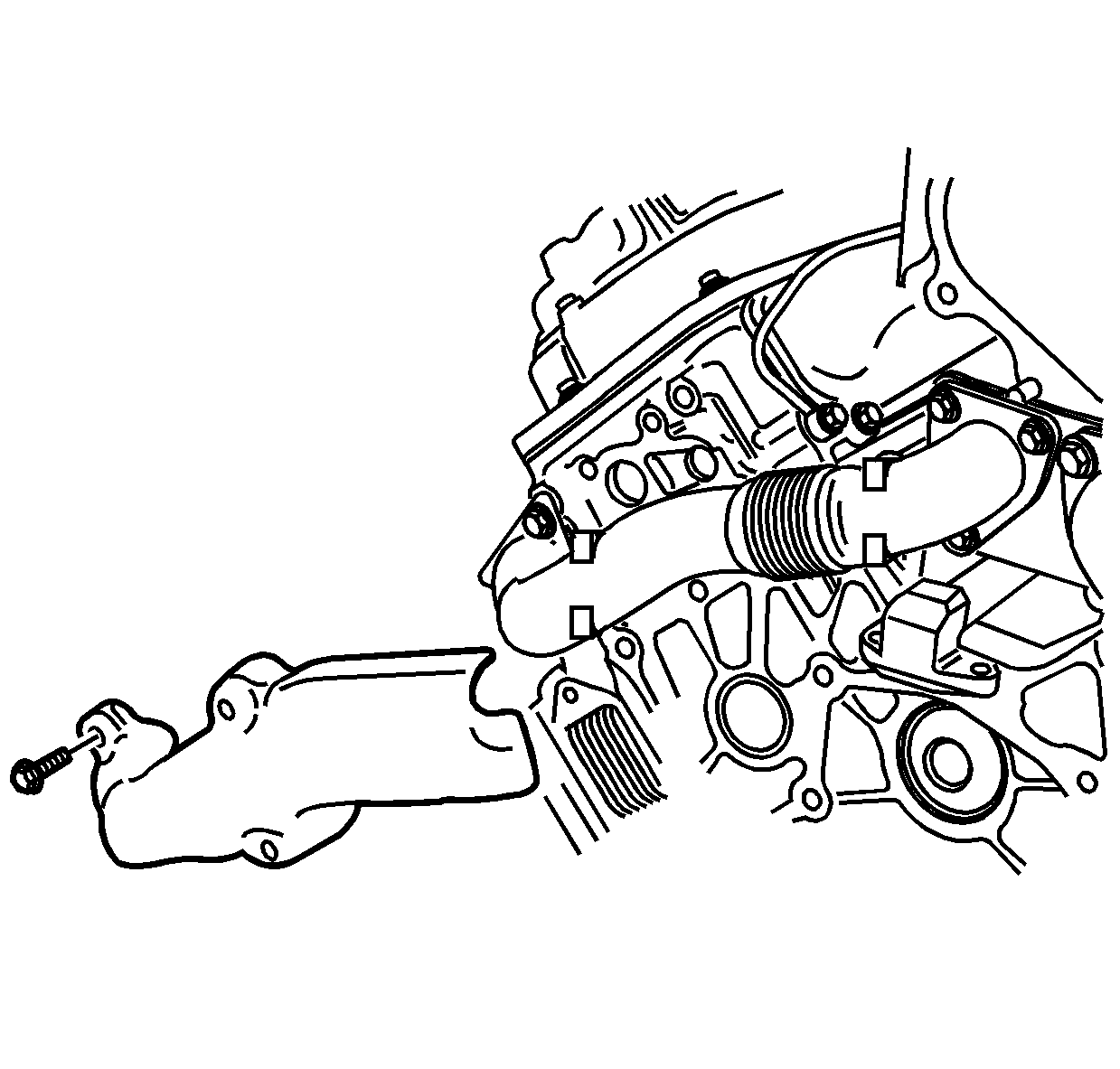
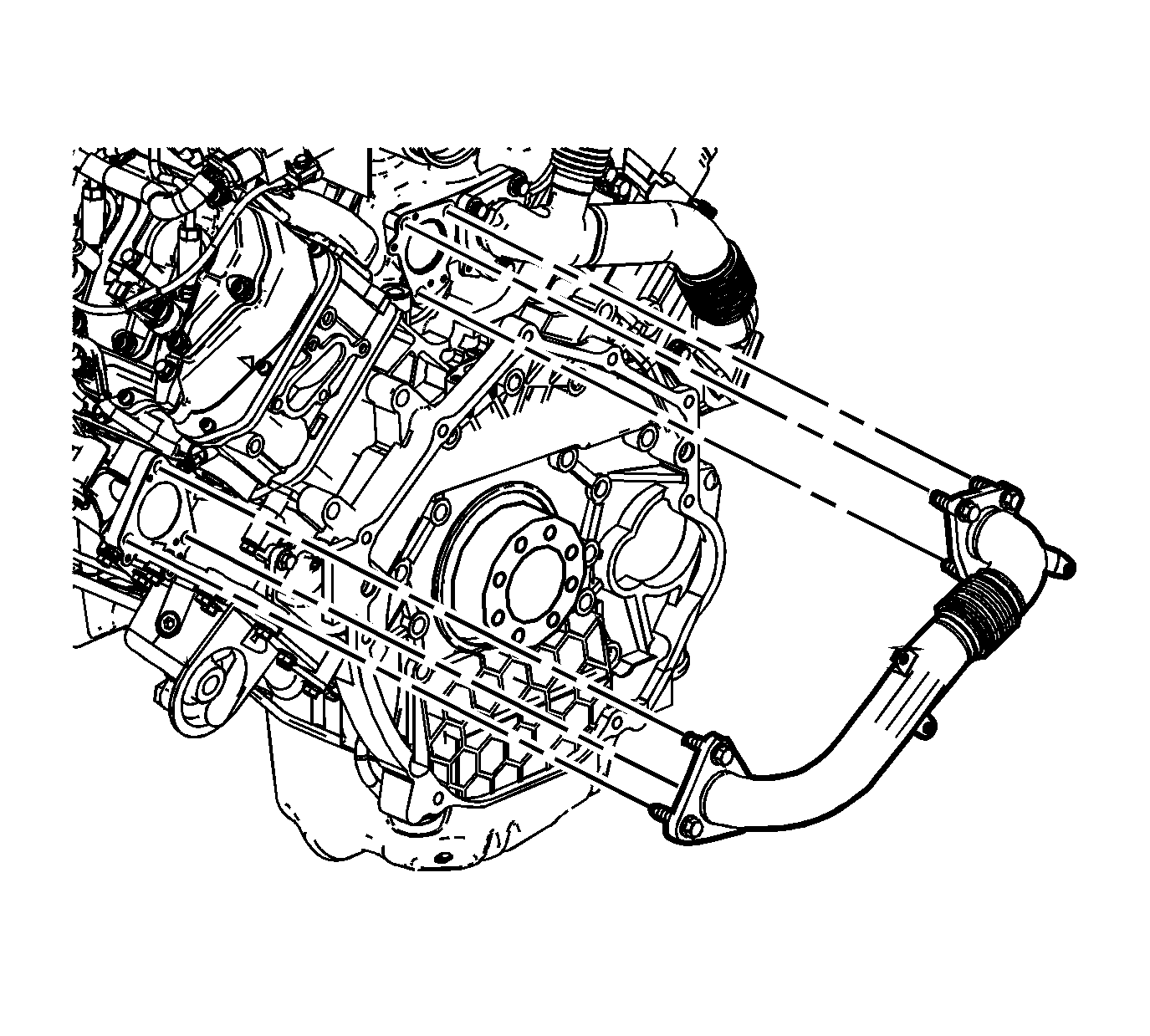
Important: Do not bend the exhaust pipe at the expansion area.

Important: Do not bend the exhaust pipe at the expansion area.

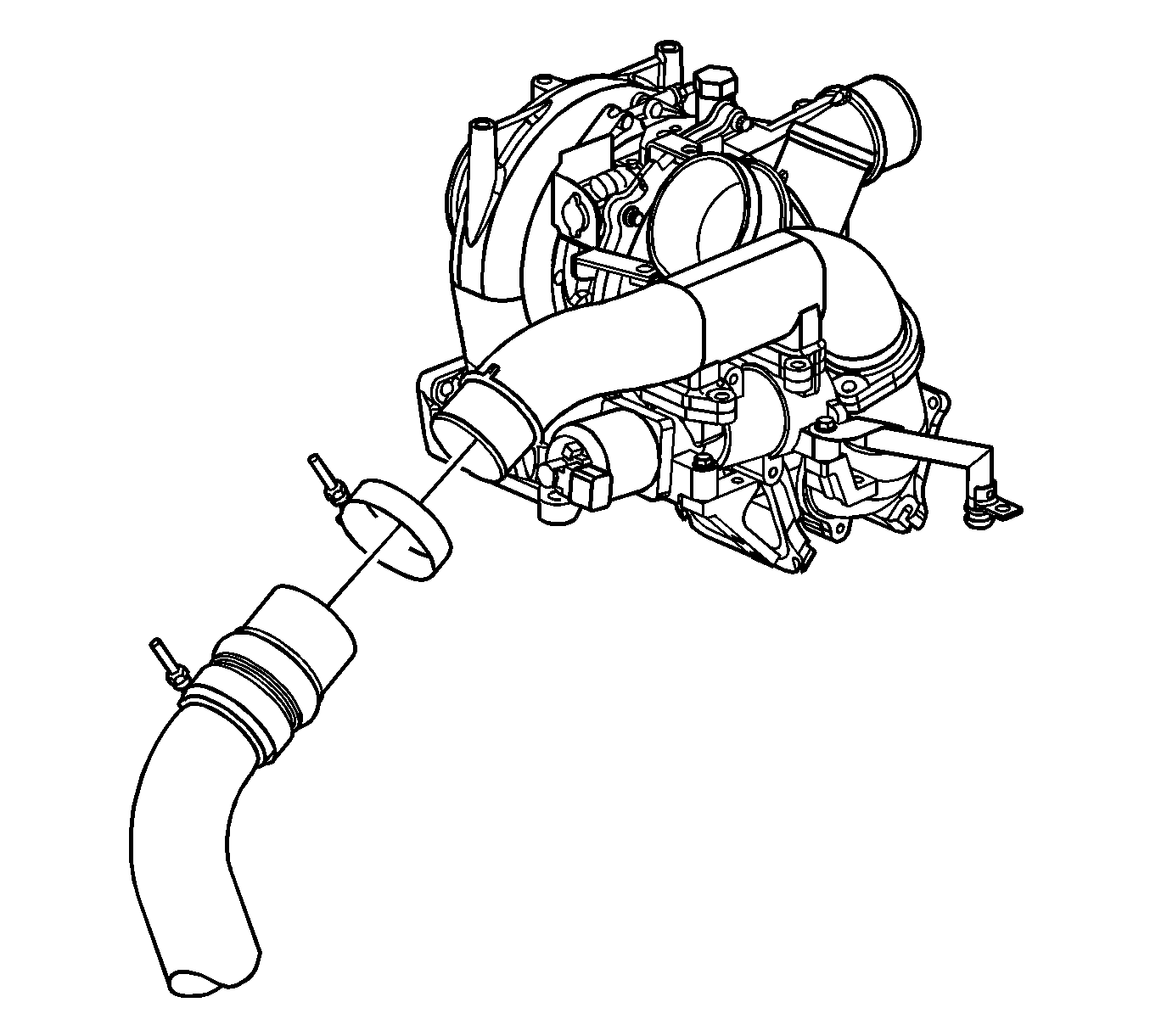
Important: Do not use a screwdriver or other tool to pry the hose loose. The hose can be torn or damage. Loosen the hose by twisting.
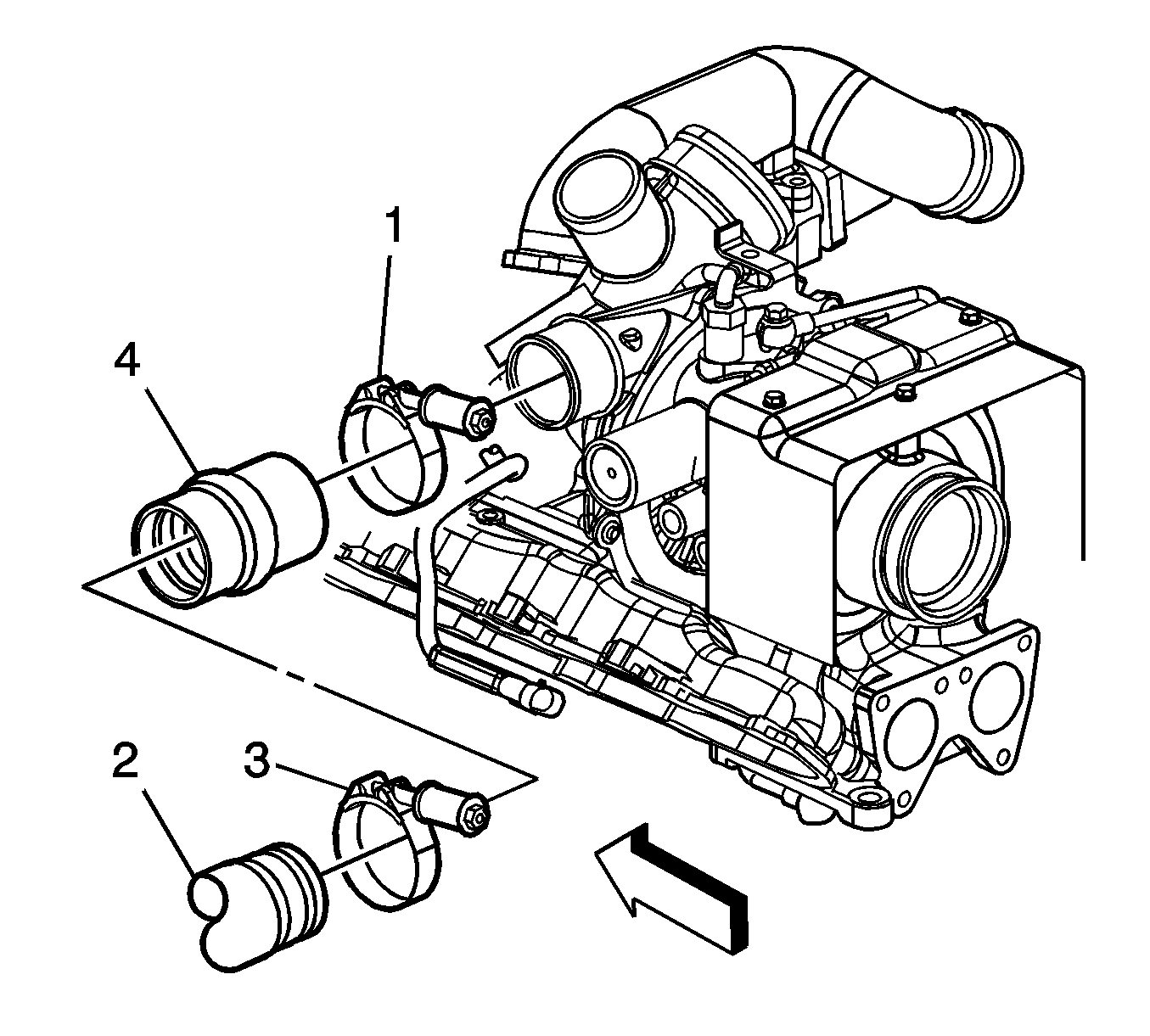
Important: After removing the charged air cooler duct, cover the turbocharger opening with tape in order to prevent entry of objects.
Important: Do not use a screwdriver or other tool to pry the hose loose. The hose can be torn or damage. Loosen the hose by twisting.

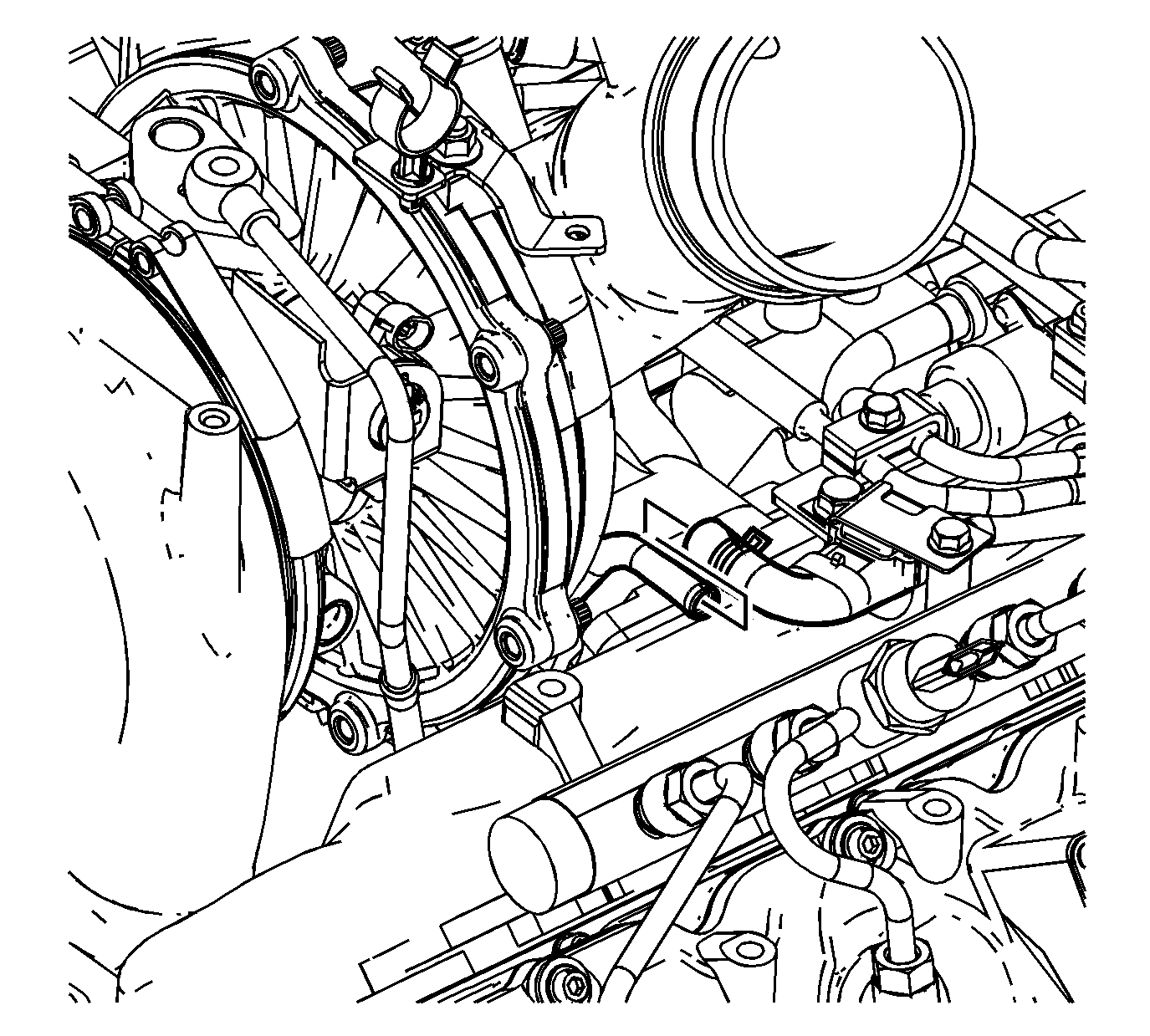
Important: Use care not to damage this hose during the procedure.


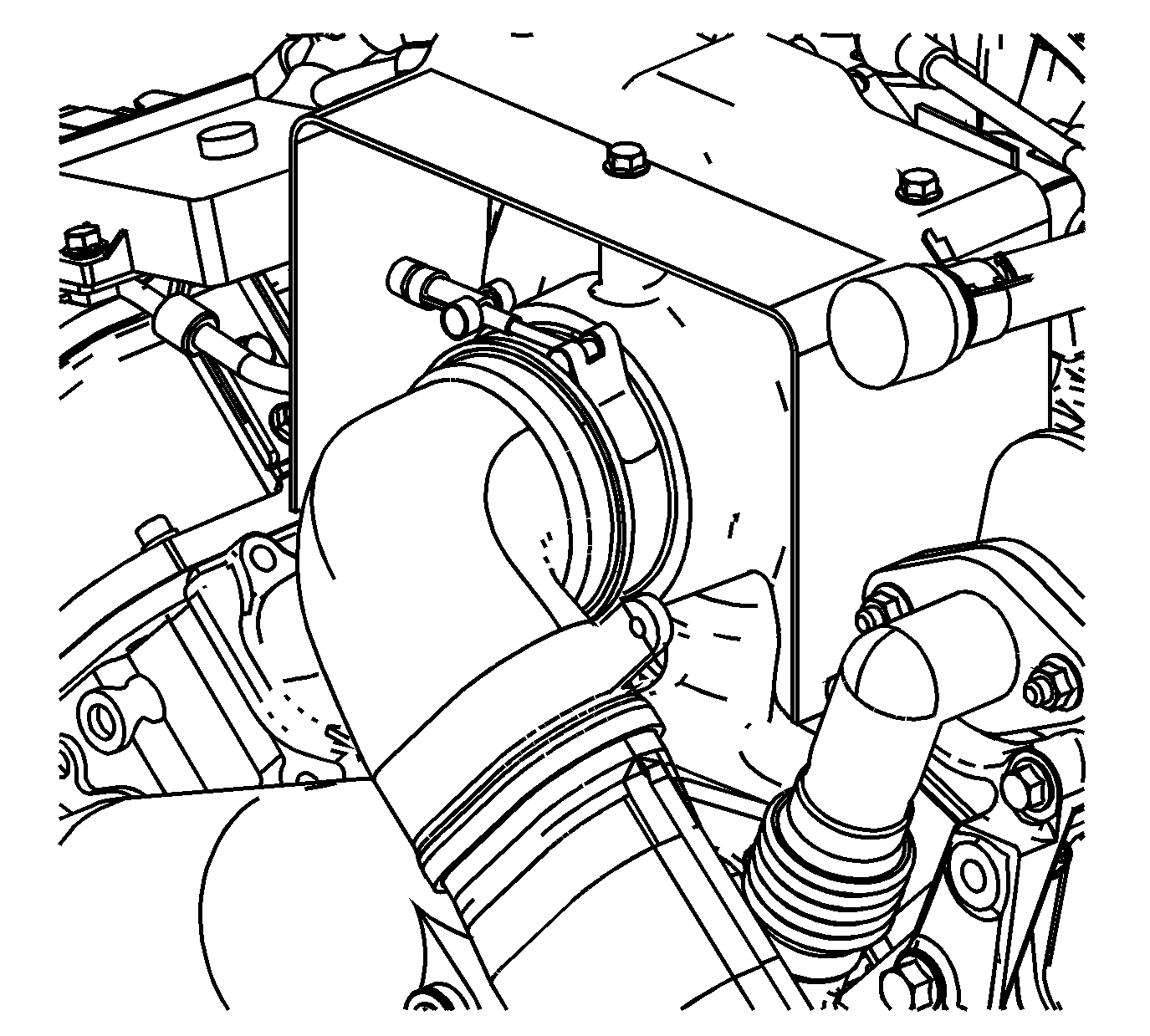
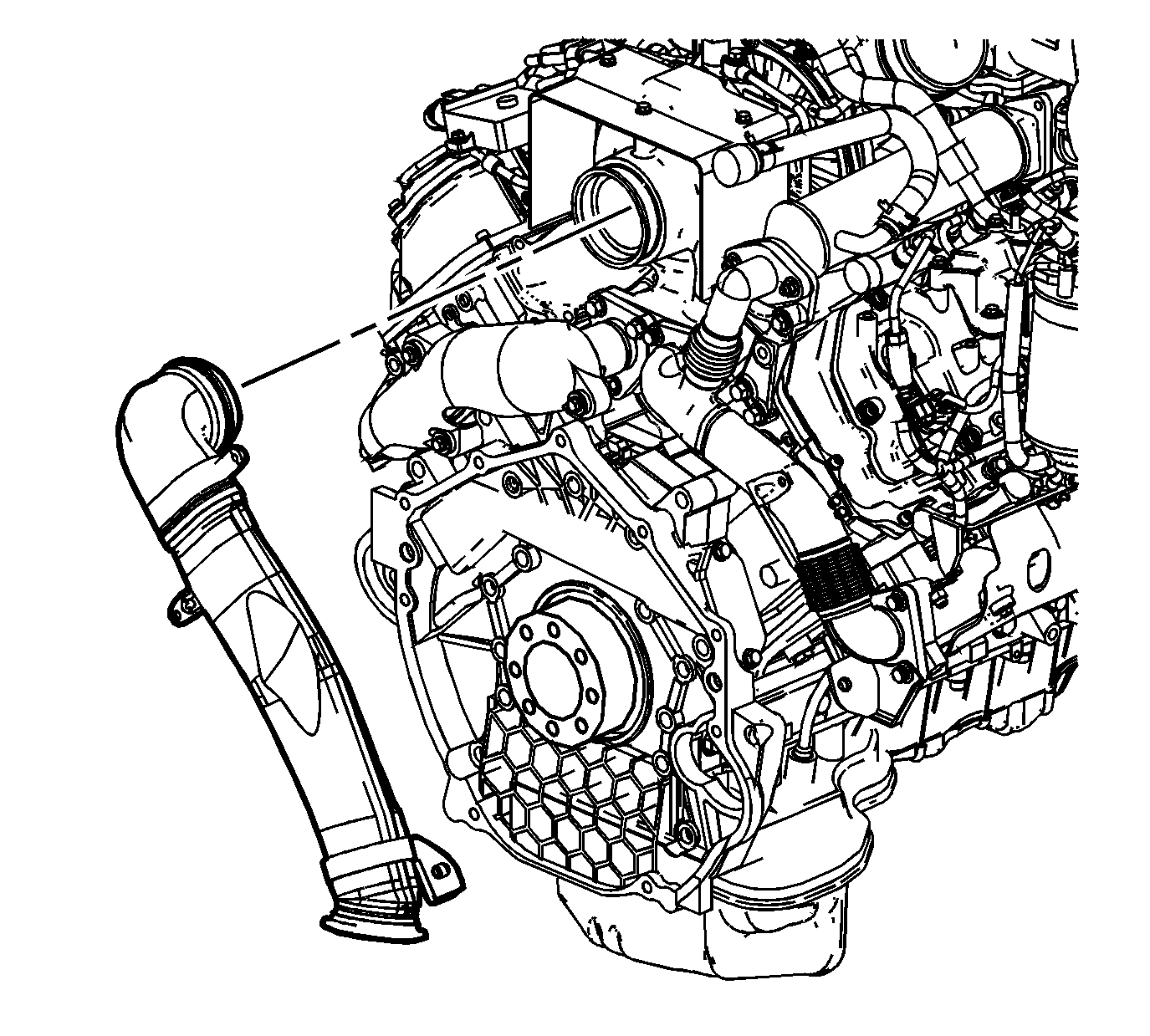


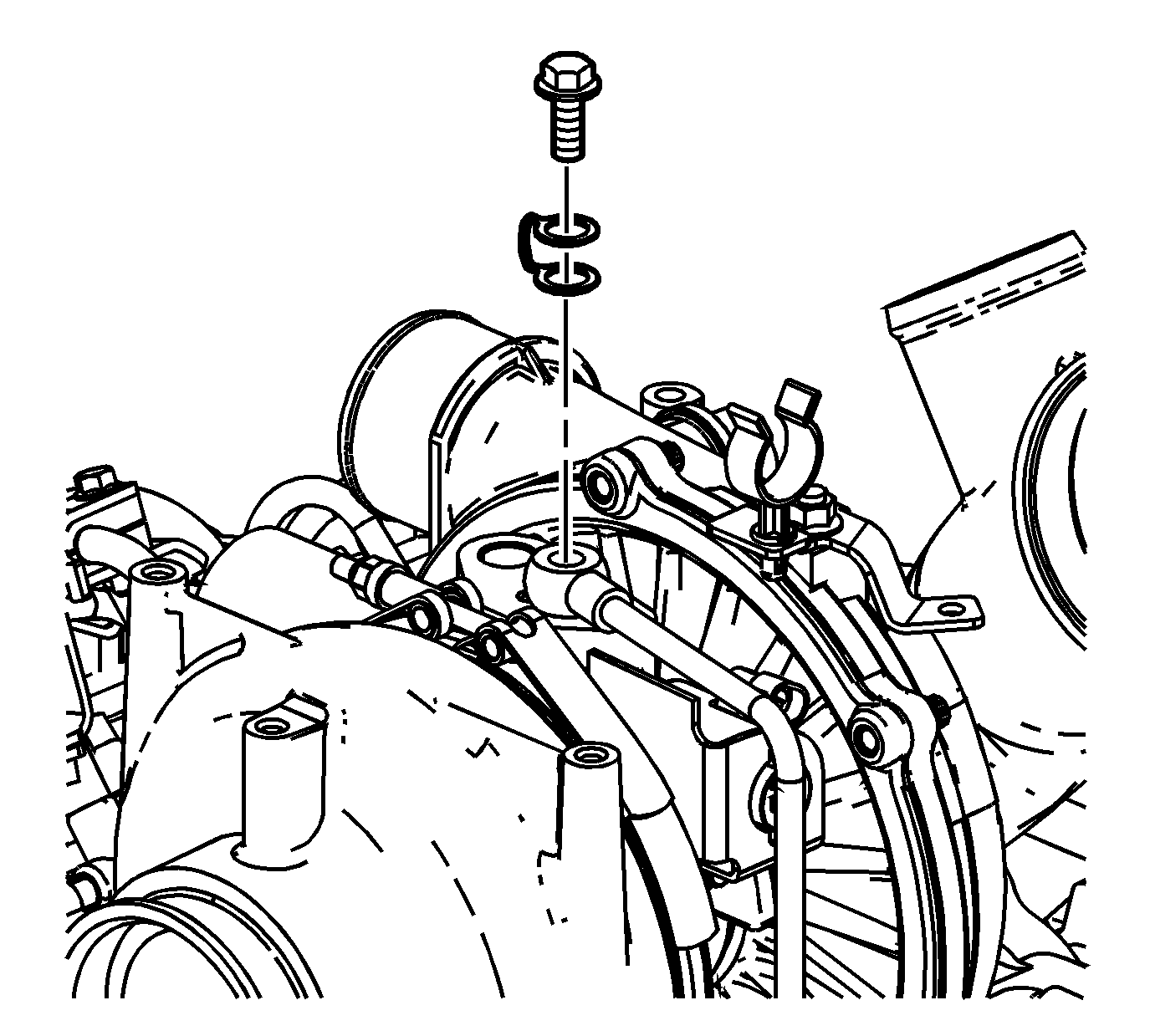
Notice: Do not twist the turbocharger oil feed pipe. Twisting of the feed pipe will result in the collapse and deformation of the plastic pipe, restricting oil flow and causing turbocharger damage. During turbocharger replacement, gently push the oil feed pipe towards the front of the engine to clear the turbocharger. Assistance may be required to keep the pipes clear of the turbocharger during removal or installation.

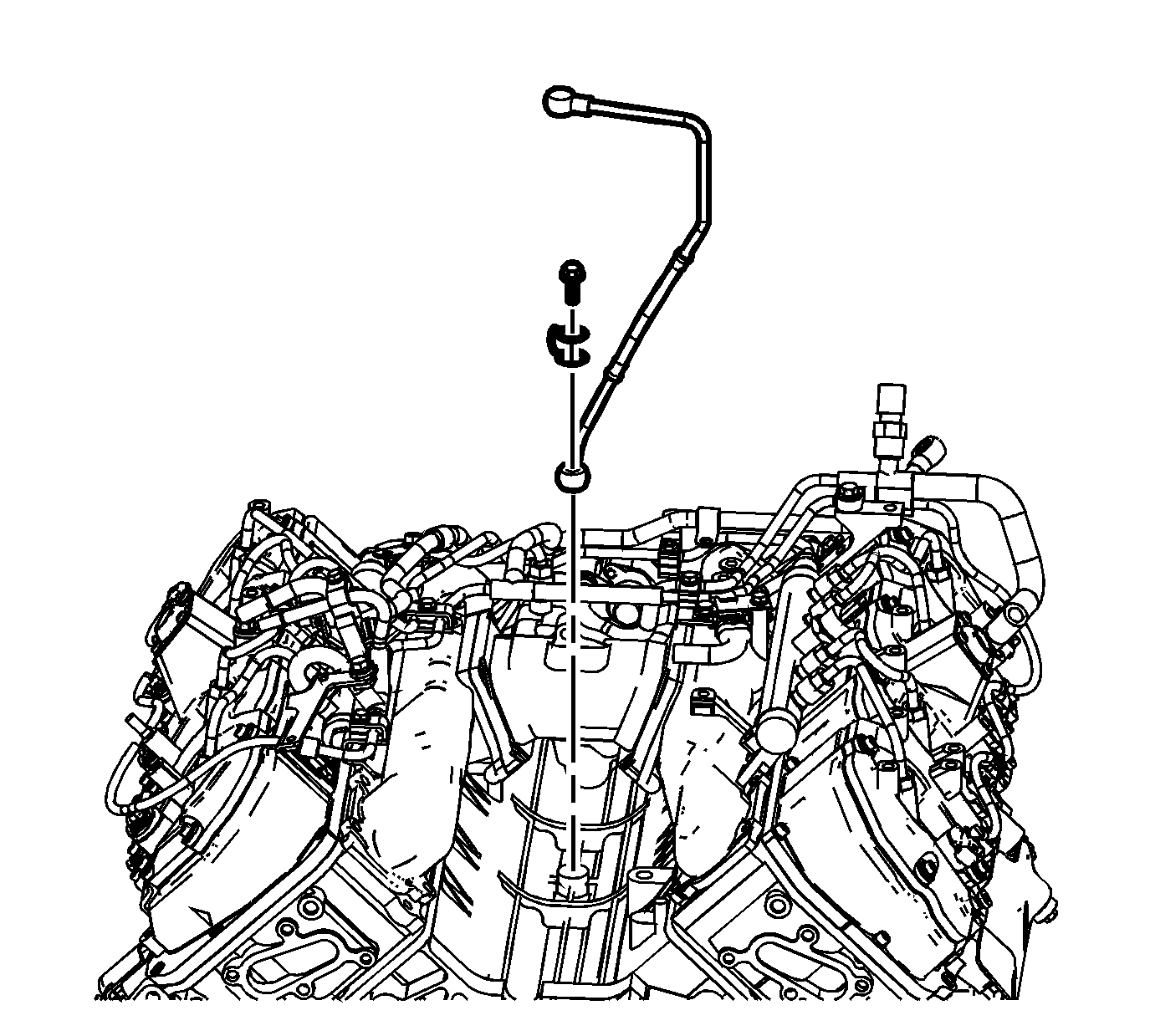
| 44.1. | Visually inspect for correct alignment of the number 4 camshaft bearing oil hole through the turbocharger oil supply hole in the block. |
| 44.2. | Turn the engine over by hand 1/2 turn and inspect for camshaft bearing movement, indicating a spun camshaft bearing. |
| 44.3. | If the bearing is spun the engine MUST be replaced. |
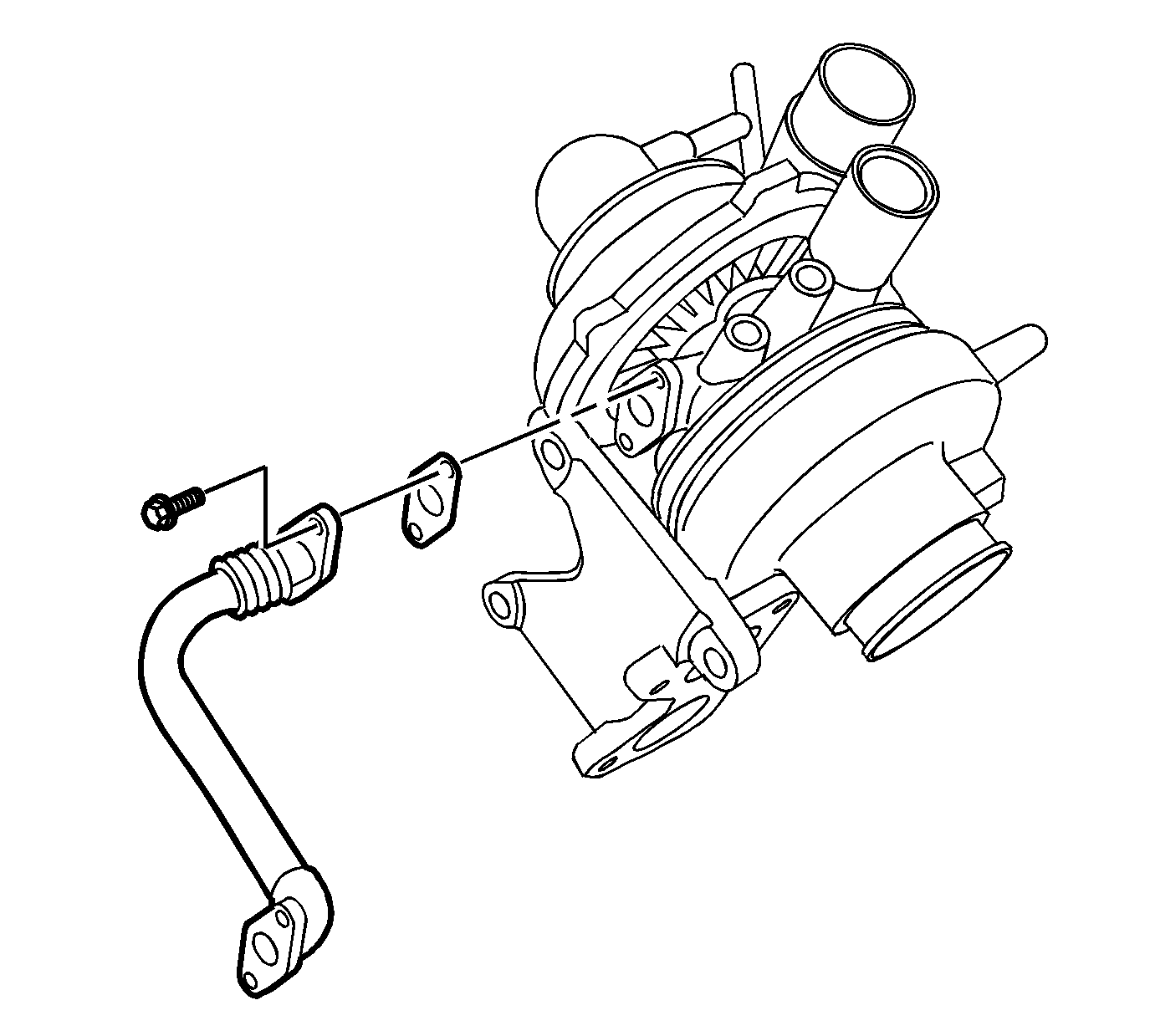
Installation Procedure
- If the turbocharger was replaced, install the oil return pipe, bolts, and a NEW gasket.
- Install the oil feed pipe, washer, and bolt, if necessary.
- Install the turbocharger lower heat shield, if necessary.
- Install a NEW turbocharger oil return pipe gasket at the flywheel housing.
- Install the turbocharger (with the oil return pipe).
- Install the turbocharger bolts.
- Install the turbocharger oil return pipe nuts at the top of the flywheel housing.
- If installing a NEW turbocharger, add about 120-150 cc (4-5 oz) of clean engine oil in the turbocharger oil feed pipe opening while rotating the impeller.
- Position the oil feed pipe to the turbocharger.
- Install a NEW turbocharger oil feed pipe washer and the banjo bolt.
- Install the left exhaust pipe and a NEW gasket.
- Install the left exhaust pipe to turbocharger bolts.
- Install the right exhaust pipe and a NEW gasket.
- Install the right exhaust pipe to turbocharger and EGR bolts.
- Install the exhaust outlet.
- Tighten the exhaust outlet clamp.
- Install the exhaust outlet heat shield.
- Install the remaining exhaust outlet heat shield bolts.
- Install the PCV hose/pipe. Refer to Positive Crankcase Ventilation Hose/Pipe/Tube Replacement .
- If the cooling outlet hose eye bolts were removed, install the longer bolt (1) with 2 holes, in the top location. Install the shorter bolt (2) in the lower location.
- Install the turbocharger outlet coolant pipe banjo bolt and washers.
- Install the turbocharger outlet coolant hose to the turbocharger and position the hose clamp.
- Install the turbocharger inlet coolant hose to the turbocharger coolant bypass valve.
- Install the turbocharger upper heat shield.
- Install the turbocharger upper heat shield bolts.
- Remove the tape from the turbocharger openings.
- Install the charged air cooler inlet duct connector (4) to the turbocharger.
- Tighten the charged air cooler inlet duct connector to turbocharger clamp (1).
- Install the charged air cooler outlet duct to the intake.
- Tighten the charged air cooler outlet duct to intake hose clamp.
- Fill the cooling system. Refer to Cooling System Draining and Filling in Engine Cooling.
- Install the lower bolt for the exhaust outlet shield.
- Install a NEW exhaust manifold gasket.
- Install the right exhaust pipe to exhaust manifold bolts.
- Install a NEW exhaust manifold gasket.
- Install the left exhaust pipe to exhaust manifold bolts.
- Install the heat shield.
- Install the left exhaust pipe heat shield bolts.
- If equipped with an automatic transmission, position the fill tube to the studs.
- Install the transmission fill tube to bellhousing nuts.
- Slide the clamp onto the exhaust pipe. Tighten the exhaust pipe clamp.
- Connect the negative battery cable. Refer to Battery Negative Cable Disconnection and Connection in Engine Electrical.
- If a NEW turbocharger was installed, perform the turbocharger learn procedure. Refer to Turbocharger Learn in Engine Controls - 6.6L (LLY).
- Road test the vehicle for normal operation.
- Inspect for coolant, oil, or exhaust leaks. Correct as necessary.
- Perform the turbocharger learn procedure. Refer to Turbocharger Learn Engine Controls - 6.6L (LLY).
Notice: Refer to Fastener Notice in the Preface section.

Tighten
Tighten the bolts to 21 N·m (15 lb ft).

Notice: Do not twist the turbocharger oil feed pipe. Twisting of the feed pipe will result in the collapse and deformation of the plastic pipe, restricting oil flow and causing turbocharger damage. During turbocharger replacement, gently push the oil feed pipe towards the front of the engine to clear the turbocharger. Assistance may be required to keep the pipes clear of the turbocharger during removal or installation.
Important: Lubricate the washer with diesel fuel prior to installing.
Tighten
Tighten the bolt to 34 N·m (25 lb ft).

Tighten
Tighten the bolts to 108 N·m (80 lb ft).
Tighten
Tighten the nuts to 25 N·m (18 lb ft).

Tighten
Tighten the bolt to 34 N·m (25 lb ft).

Tighten
Tighten the bolt to 53 N·m (39 lb ft).

Tighten
Tighten the bolt to 53 N·m (39 lb ft).


Tighten
Tighten the clamp to 15 N·m (11 lb ft).

Tighten
Tighten the bolt to 8 N·m (71 lb in).
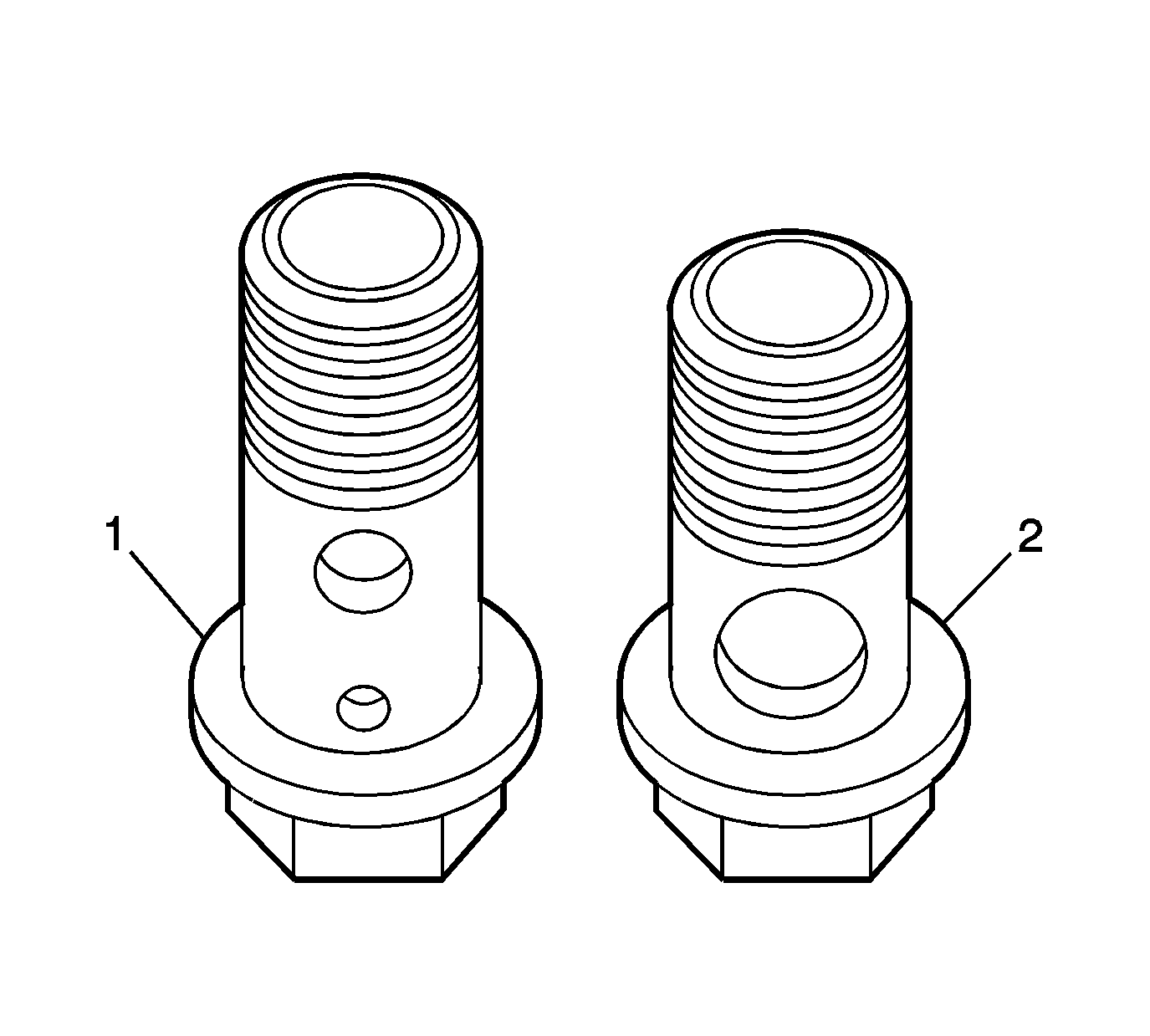

Tighten
Tighten the bolt to 26 N·m (19 lb ft).


Tighten
Tighten the bolt to 9 N·m (80 lb in).

Important: Lubricate the end of the duct prior to installation.
Tighten
Tighten the clamp to 6 N·m (53 lb in).

Important: Lubricate the end of the duct prior to installation.
Tighten
Tighten the clamp to 6 N·m (53 lb in).

Tighten
Tighten the bolt to 8 N·m (71 lb in).

Tighten
Tighten the bolts to 53 N·m (39 lb ft).

Tighten
Tighten the bolts to 53 N·m (39 lb ft).

Tighten
Tighten the bolts to 8 N·m (71 lb in).

Tighten
Tighten the nuts to 18 N·m (13 lb ft).

Tighten
Tighten the clamp to 15 N·m (11 lb ft).
